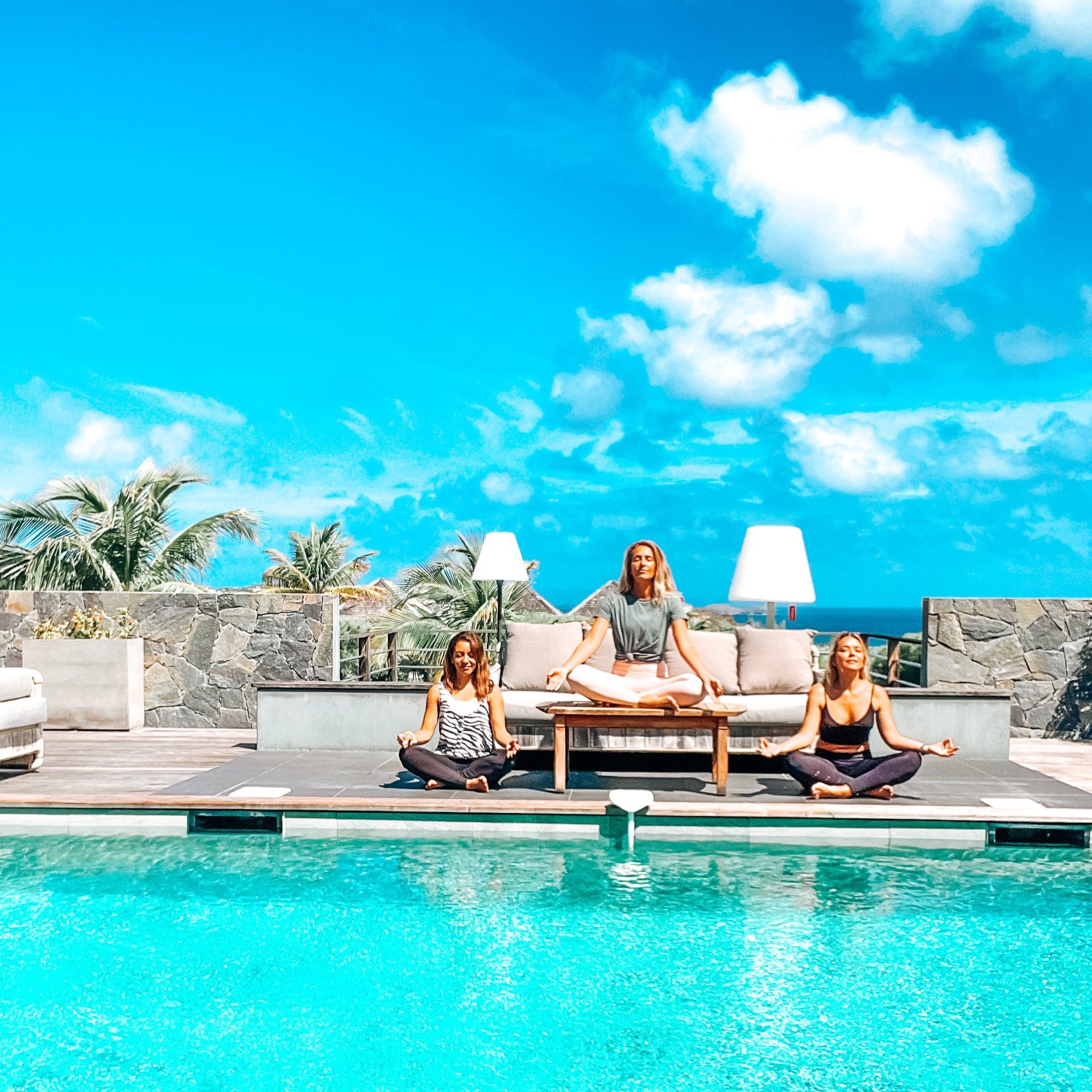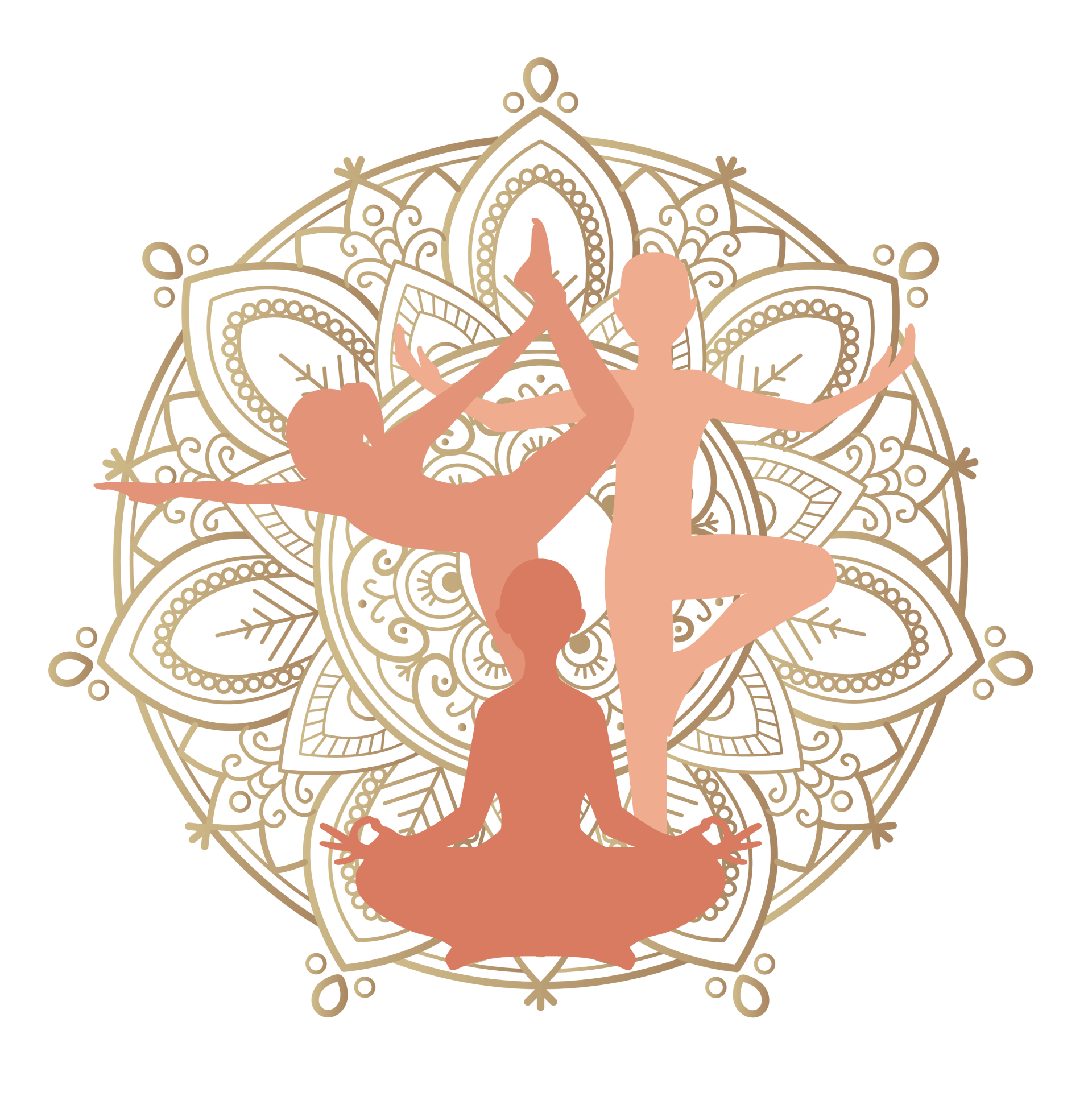How can yoga help you cope with stress?
Elodie Abadie • 13 septembre 2023

Yoga is effective against stress and anxiety
Stress
is the burden of the modern world. Today's society is focused on performance, competition and perfection, and stress infiltrates and creates devastating effects that are often underestimated.
Stress can ruin your life, disrupt your work and your family and friends, prevent you from enjoying your happiest moments, and sometimes even make you
physically ill.
Your body sends you signals when your stress level reaches a very high level. Such as muscle tension, digestive and gut issues, sleep disorders (insomnia), lack of appetite, migraines, dizziness and fatigue.
It's important to have some time to yourself, to let go of all those tensions and anxieties.
I'm convinced that the best response to almost any situation in life (at least initially) is to
observe. By definition, I can only observe whatever is not me, since I'm the one who's observing. To observe something is to place yourself outside of it: not to identify with it.
Meditation is the best way to observe yourself.
I'm going to share with you a meditation practice accessible to all:
- Sit down in the most comfortable position for you: cross-legged, lying down.... Think of a situation that arouses doubts or discomfort.
- Close your eyes and observe the sensations evoked by this situation. What do they tell you? Do I feel stiff? If my breathing is more restricted, I ask myself: What is suffocating me?
- Find out what you can do in response to this awareness to restore harmony within yourself.
It is then possible to enjoy a more relaxing life, even under pressure, by using simple tools such as meditation and Yoga Dance.
Why is Yoga Dance so liberating?
Yoga dance is a physical activity that alternates times of stamina with quiet moments. This pattern helps reduce stress by lowering blood pressure and heart rate.
The class helps you let go through repetition, work on movement with full body awareness and deep muscle work.
When I want to work on reducing stress, I add Vinyasa yoga poses most suited for stress or anxiety to my choreography. For example, plough pose, standing forward fold, puppy pose...
I invite you to sign up to my online studio to try out my latest choreographies.
What about breath (Pranayama)? This is a great bonus

You might think that alignment in yoga means placing your knee perfectly above your ankle, keeping your hips square, and your spine long and straight.
But what if it was so much more than that? In our culture of “doing things right,” alignment is often reduced to a technical cue — a matter of perfect lines and precision.
Yet in yoga, true alignment goes far beyond the body .
It extends into the breath, the energy, the emotions — and the way you connect to yourself. This article invites you to revisit this word we hear everywhere and rediscover its deeper meaning — on your mat and in your life.

What if we practiced yoga to return to simplicity?
Not to perform.
Not to master a thousand postures.
Not to impress.
But to come back to what truly matters: one breath, one presence, one body we truly listen to. Today, yoga is often seen as a performance discipline — associated with the image of the perfect body or the most advanced pose.
Yet, in its essence, yoga is a practice of awareness and unity .
It’s not about doing more, but about being more present. This article invites you to drop the masks, let go of the “shoulds,” and rediscover yoga as a path back to yourself — to slowness, to simplicity, and to truth.

What if your body had messages that your mind can’t put into words?
What if free movement was a doorway to everything you feel deeply but don’t dare to express? The body remembers.
The body speaks.
And sometimes, all it takes is letting it move differently so it can finally set itself free. In this article, let’s explore the emotional intelligence of the body, the blocks that manifest through physical tension, and the power of spontaneous movement to bring back breath, clarity, and inner peace.

What if your yoga mat became more than just a space for postures?
Imagine it as an inner playground, a sacred space where you can move differently, breathe deeply, and express yourself freely. Dancing your yoga is a unique practice that blends free movement, breath awareness, and spontaneous creativity.
It’s a yoga that both grounds and liberates.
A yoga that isn’t limited to “doing it right,” but one that invites you to feel, create, and vibrate. In this article, discover what it means to dance your yoga, the benefits of this practice, and how to integrate it into your daily life.
The fear of failure affects everyone, regardless of age, background, or life path. It often prevents us from taking action , seizing opportunities, or truly believing in ourselves. Combined with the fear of judgment from others, it can become paralyzing if we don’t learn how to understand and transform it. In this article, let’s explore why the fear of failure exists, what the signs are, what failure can teach us, and above all, how to overcome it to regain confidence, serenity, and motivation.
I n yoga practice, every posture (asana) and every breath carries a deeper meaning. But there is one tool that makes your practice even more powerful: setting an intention. More than a simple ritual, an intention acts like an inner compass. It guides your energy, directs your mind, and transforms your yoga session into a true experience of awareness and alignment. 👉 In this article, you’ll discover why setting an intention in yoga is essential , how to formulate it effectively, when to use it, and the benefits it can bring both to your practice and to your daily life.
Intuitive dance is attracting more and more people seeking well-being, creativity, and release. But what exactly is it? As its name suggests, it is a dance guided by intuition rather than an imposed choreography. Here, there are no rules, no codes, no aesthetics to respect. You move freely, in tune with your sensations, emotions, and breath. Intuitive dance is an invitation to reconnect with your body and your deeper self through spontaneous movements, without judgment or performance.

Talking about money is often delicate—especially when it comes to a spiritual and ancient practice like yoga. Many people associate yoga with inner peace, serenity, and the search for meaning, while seeing money as a purely material value opposed to this quest. But the reality is much more subtle: yoga and money are not incompatible. Practicing yoga often requires an investment: studio classes, workshops, retreats, teacher trainings, equipment (mats, props…). This raises an important question: why do we hesitate so much to invest in our well-being, when we spend much more easily on things that don’t necessarily bring lasting value to our lives? In this article, let’s explore the link between yoga and money , and why investing in your practice may be one of the best choices you can make.

I t is often said that we learn best by teaching others what we ourselves have understood.
Teaching, and especially teaching yoga, is a true vocation rooted in sharing. More and more yoga enthusiasts are taking the step to become teachers. But how do you start teaching yoga? What steps should you take, what skills are required, and what qualities are essential to transmit this ancient discipline? In this guide, we’ll explore the key points to becoming an inspiring, competent, and aligned yoga teacher.

In yoga, each breath is far more than an automatic body movement: it is a deep connection between body, mind, and vital energy.
The Sanskrit word Prana means both breath and life , reminding us that the breath is the very essence of our vitality. Did you know that you breathe between 20,000 and 30,000 times a day , most of the time unconsciously? In yoga, the breath becomes conscious, guided, and intentional—and that’s what transforms a simple physical practice into a true path of balance and well-being. In this article, let’s explore why breathing is so important in yoga, what specific breathing practices (pranayama) exist, and the many benefits it brings to both body and mind.
